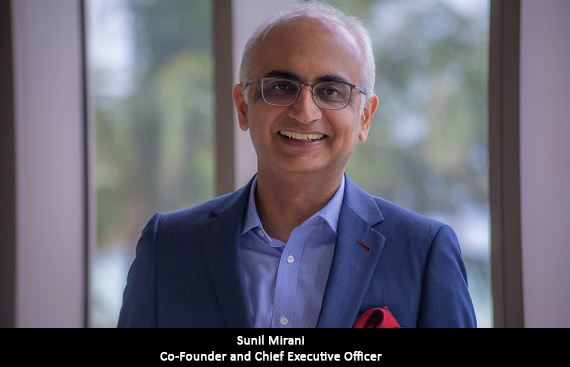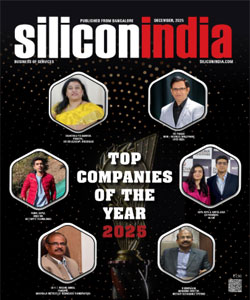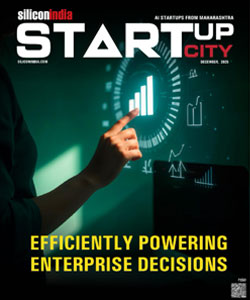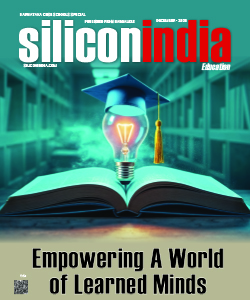A Multidimensional Look at AI's Impact on Businesses

Today, analytics and AI are great equalizers, which enables smaller organizations to create a greater presence in the market and enables bigger organizations to create intimate connections. In a recent interaction with the Editor of Silicon India, Sunil Mirani and Mihir Kittur, Co-Founders of Ugam, a Merkle company, shared their insights on the impact driven by AI on businesses today, and what developments can we expect to see in the future.
1. Share your thoughts on the adoption of AI and analytics in India.
Sunil: While discussing AI and analytics in India, I'll share my thoughts in three dimensions - as a consumer, as a citizen, and as a business. As a consumer, we are witnessing the development and manifestation of AI in the personalization of offers and experiences in our digital journey. Businesses today have evolved from the clunky platforms of the past to new, world-class platforms that leverage data, analytics, and AI to power individual experiences and preferences.
As citizens, the evolution and adoption of AI impacts every facet of our lives. For example, even while filing our taxes, the form comes pre-populated with capital gains or interest – which wasn’t the case a few years ago.
Finally, from a business perspective, we are helping companies in the U.S. use data, analytics, and AI across the entire organization – from marketing to supply chain to merchandizing and so on. Businesses today are not necessarily competing on products, but rather on the experiences they deliver. Consumers are more likely to shop at or stay loyal to brands that provide great customer experiences. And critical to delivering great experiences is analytics and AI – that’s where Ugam along with our parent company, Merkle are at the forefront of driving impact.
![]()
Mihir: Interestingly, many people talk about AI, but very few people apply it successfully. With regard to the application AI in India, businesses can be classified into three buckets. First are new-age start-ups that are embracing AI and trying to get it right early on. Next are service providers and experts, like Ugam, that are at the forefront of AI application and generally serve western markets. Finally, there’s a huge set of companies that are trying to apply AI but are still quite nascent. So, in my view, the places with the most business application of AI in India would be the first two business groups.
2. From an industry perspective, what is the need and application of cognitive computing systems?
Mihir: Over the past few years, the amount of data and compute power has tremendously grown. Moreover, with customers wanting everything in near real-time, the need for intelligent cognitive computing systems, like Ugam’s JARVIS, has intensified. These systems bring in humungous amounts of data and algorithms, with the aim of helping businesses ‘repeat and scale’ specific use cases to drive better customer experiences.
Ugam’s JARVIS is our very own proprietary cognitive computing system. It is built on a tailored suite of machine learning algorithms that is trained on over 10 years of data and continues to get better as it ingests over 100 million data points each day. These algorithms can be deployed to deliver faster and better results at scale across very specific use cases. I think the success of AI has been more in narrow AI; systems like Ugam’s JARVIS have demonstrated that they can be very successful for that.
Sunil: While we leverage such systems and technologies, it is important to create an ecosystem with the right balance of man + machine. We, as a company, believe that augmented intelligence is the future of decision-making. Even though the technology may be very cool, it still must serve the purpose of the business. Bringing human intelligence at the center of new-age technologies helps one be more mindful of the problem they are trying to solve and achieve the best results.
3. How should an organization align business development and corporate finance strategies to welcome the benefits of AI and Data Science?
Sunil: A lot of companies are increasingly facing pressure to meet customer expectations and are leveraging new-age technologies like AI/ML to drive better customer experiences. For service-providers like Ugam, who help other businesses along their CX transformational journeys from strategy to execution, we see this in two parts.
First, from a business point-of-view, we need to make sure our own business development teams are appropriately equipped with the knowledge or skillsets to have the right conversations with clients and identify the areas we can help. And making sure we partner with the tech-savvy clients who are ready to take the leap with us.
From a finance perspective, making the right investments and tracking the right metrics is key. Moreover, such investments and metrics should be looked at differently, as it may involve a lot of upfront investments that would yield benefits at a later stage. In such cases, looking at metrics in a traditional manner may result in making the wrong business decisions.
Mihir: Adding to what Sunil said, businesses are realizing the need to step-up their customer experience game with various new-age technologies. They have begun educational programs to explore what’s out there, what are competitors doing, and undertake some proof of concepts. At the initial stage, the emphasis not so much on ROI as on making it a learning agenda. And once they start making progress, they would then turn it into a full-fledge initiative.
4. What does the future for artificial intelligence look like and what new developments can we expect to see?
Sunil: In terms of new developments, all the things that gave rise to AI in the first place, will continue to influence its future. The number of data sources, volume of data, compute power, ability to store and process data faster and cheaper will only increase. As AI-led technologies continue to develop and evolve in the future, it is important to put humans at the core of all these technologies. We may reach a time when AI will probably think for itself. Therefore, building the right foundation today is critical. As societies, governments, and industry we need to set the right ethics, regulations, and safeguards around AI to ensure than 100 years from now, the future of AI is one that is to the benefit of humanity and not to its detriment. We hope that the future of AI is more ‘intelligent’ than artificial.
Mihir: I think the big need today is that technology has to be human-centric intelligence and expert decision systems. If you look at it today, the computer or any cognitive system can only answer a question; it cannot ask a question. So firstly, we need to ask the right question. And as Sunil said, the question should be framed within the proper ethics and benefits to society at large. In fact, a dangerous trend we have been seeing is that as AI becomes more advanced and powerful, it is also turning into a ‘black box’ that is impossible to interpret. Not even the creators of the algorithm can pinpoint what is happening inside it or how did it arrive at a specific result. As a result, we have started employing what is called the explainability of models, which enables users to comprehend the intent, reasoning, and decision-making process of a machine learning algorithm. Hence, while the future of AI is exciting, there are a lot of pitfalls unless you bring human and experts at its center. Moreover, it is important to ensure that there is diversity in the teams working on these models to ensure any conscious or unconscious biases aren’t influencing its decision-making.
5. Which industries do you think are more receptive to the changes that AI has been bringing about?
Sunil: I think all will need to, but it is the industries that are rich in historical data and face highly competitive pressures will be at the forefront of AI and analytics adoption. So, industries like financial services or retail, where the product is largely commoditized and are competing mainly on experience, will be most receptive. On the other hand, industries such as healthcare have traditionally been laggards, but as they get more savvy and data rich, are increasingly adopting AI to drive greater impact.
Mihir: I think healthcare will have its own challenges on account of regulations and the fact that every country has a different healthcare system. of sorts, right in the sense that funded differently and managed differently, etc. Unlike, financial services and retail, which can be run globally, healthcare tends to have very local nuances. But another exciting area in which we could see the accelerated adoption of AI is in the B2B space – in places like energy, logistics, and distribution. In B2B, many companies have a very aging employee population. Take any typical distributor in the US – at least 40% of employees would be 5 years away from retirement. This signifies that there is a lot of tacit knowledge residing in these people that need to be translated into a better system. These are the type of industries with tremendous potential and several opportunities for the adoption of AI.
Read More News :
Technology in Cancer Care: A story of evolving paradigms
Crafting a winning strategy for CX with 'High-Tech, High-Touch'





